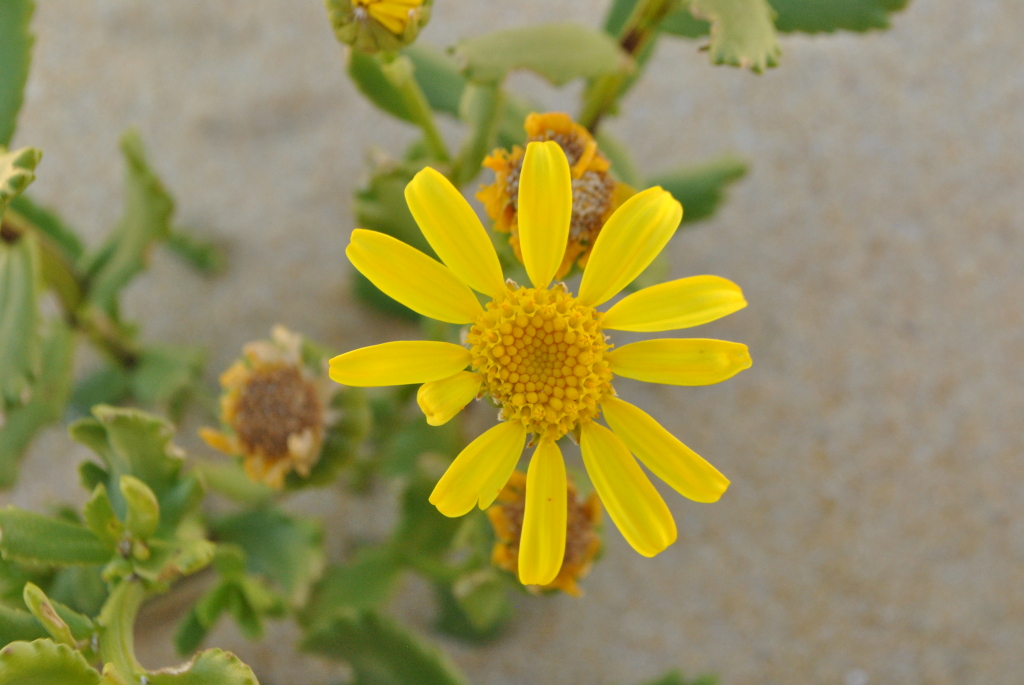Senecio
Annual or perennial herbs or shrubs, rarely climbers; indumentum of simple unicellular and/or septate hairs, or glabrous. Leaves alternate, sessile or petiolate, entire, toothed, lobed or pinnatisect, often with basal, stem-clasping auricles. Inflorescence usually of few–many, pedunculate capitula, in terminal or near-terminal corymbs or panicles, less commonly capitula solitary. Capitula of 1 of 3 types: radiate, with marginal, ligulate female florets and disc florets tubular and bisexual; non-radiate with all florets tubular and bisexual; non-radiate with outer florets tubular and female, and inner florets tubular and bisexual. Involucre cylindric to campanulate; bracts uniseriate, equal, usually with a few much shorter 'bracteoles' encircling the base. Ligulate florets, when present, uniseriate, usually yellow, rarely purple or white, style arms linear, truncate or rounded apically; disc florets yellow, usually 5-lobed, anthers obtuse, acute or shortly tailed at base, with an ovate to triangular apical appendage. Cypselas mostly c. cylindric, pubescent (often in lines) or glabrous; pappus of 1 or 2 series of smooth to barbellate bristles, usually weakly attached to thickened rim at apex of cypsela.
Cosmopolitan, perhaps the largest genus of flowering plants with c. 1300 species; 97 species in Australia, all except 4 species endemic, and 13 which are introduced (Thompson 2015).
Several studies have determined that the large genus Senecio as traditionally circumscribed is polyphyletic (Bremer 1994; Pelser et al 2007; Schmidt-Lebuhn et el 2020). Two widely noted segregates include the herbaceous genus Jacobaea Mill., which remains difficult to diagnose despite its phylogenetic distance from Senecio s.s., and the succulent southern African genus Curio (Schmidt-Lebuhn et al. 2020), which are at least for now are not accepted here. Most of the native Australian species were traditionally considered to be members of the core Senecio. However, molecular studies have shown that the phylogenetic relationships of Australasian Senecio show little congruence with the informal classification by Thompson (2015) (Schmidt-Lebuhn et al. 2020) which divided the species into seven native groups and an artificial "Exotic Group". Consequently, Schmidt-Lebuhn et al. (2020) transferred several species to the segregate genera Lordhowea, and Scapisenecio, which are accepted here.
Walsh, N.G. (1999). Senecio. In: Walsh, N.G.; Entwisle, T.J., Flora of Victoria Vol. 4, Cornaceae to Asteraceae, pp. 941–965. Inkata Press, Melbourne.
 Spinning
SpinningThompson, I.R. (2015). Trib. 1. Senecioneae . In: Wilson, A., Flora of Australia Volume 37, Asteraceae 1, pp. 209–315. ABRS/CSIRO Publishing, Canberra/Melbourne.




